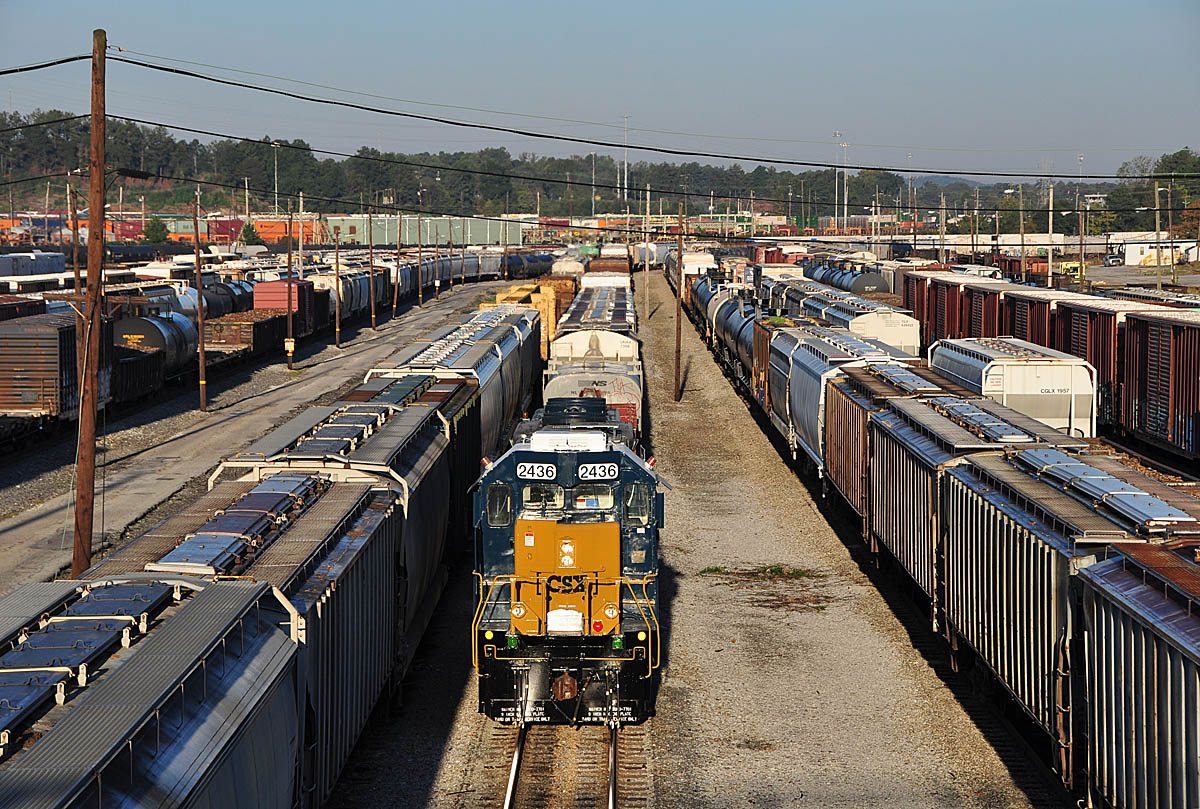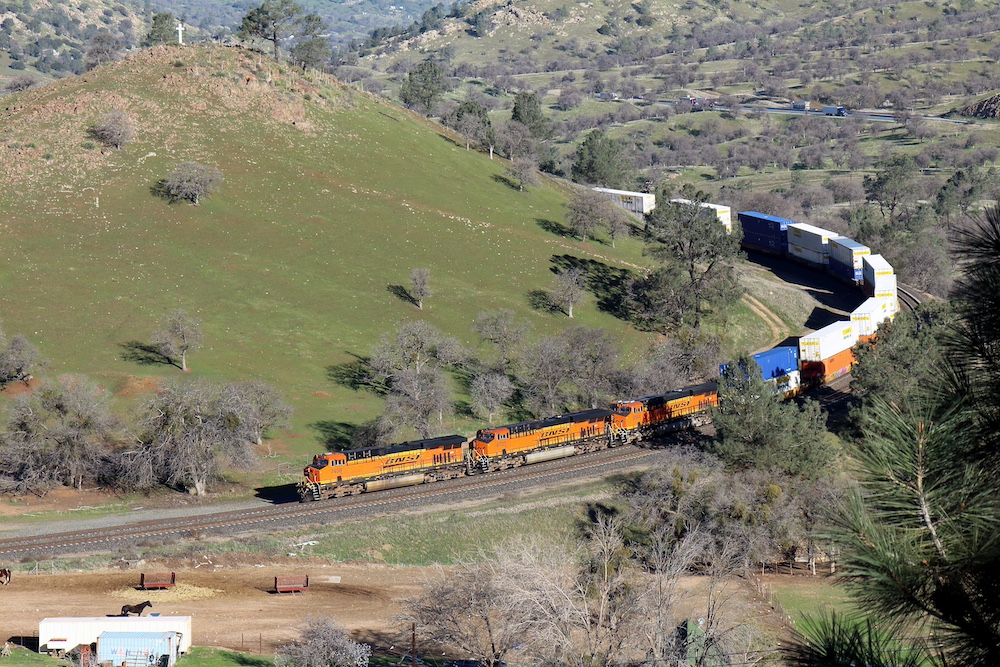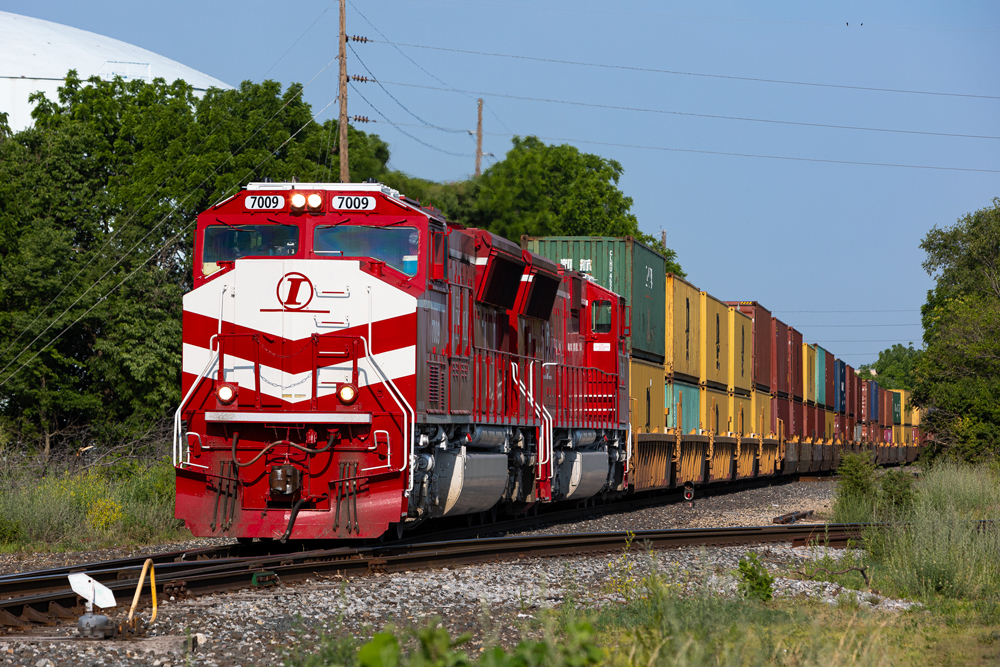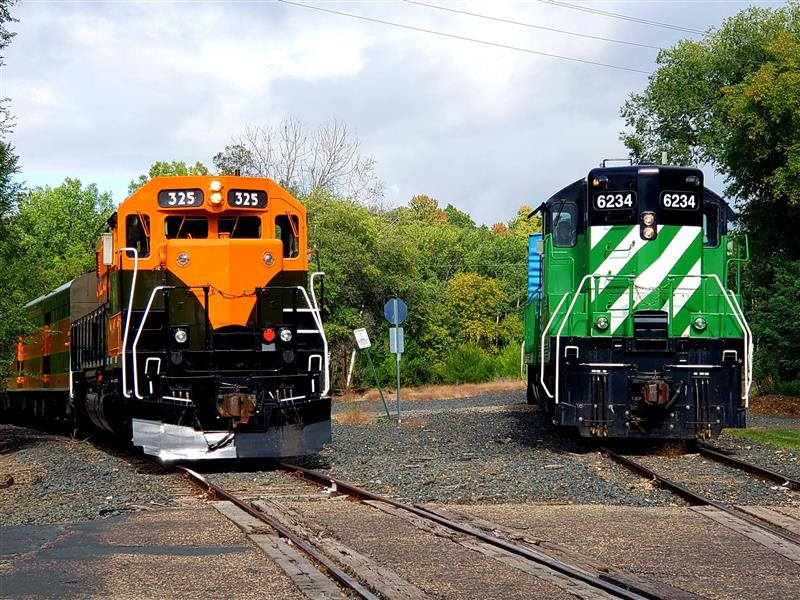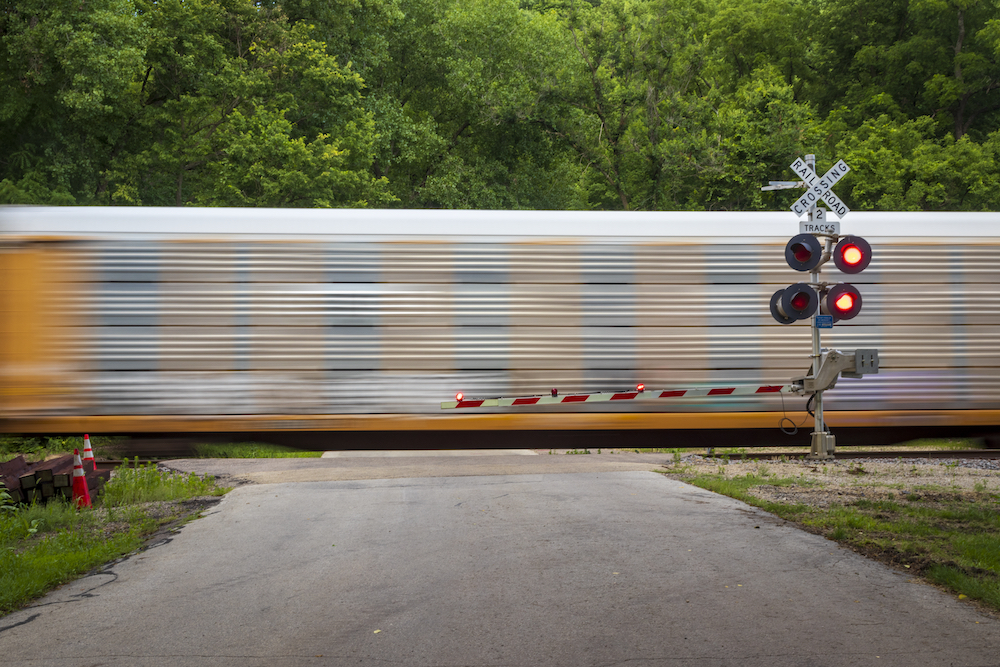
Grade crossing installations take many forms but nearly always include the railroad symbol most familiar to the public — the highway/railroad grade crossing warning sign. Crossbuck is the correct term for the X-shaped sign located just before a road reaches railroad tracks. These signs read RAILROAD CROSSING in the U.S. and are lettered with similar words, or left blank, in Canada and Mexico.
Crossbucks may be passive or active. The passive crossbuck is the most common. It is a lonely white X with black lettering on it. This type is normally placed where train speeds are moderate and road and rail traffic are light and are often supplemented by highway stop signs.
Active warning devices installed today consist of two types: red flashing lights below the crossbuck, or red flashing lights with a pivoting gate that lowers below the crossbuck.
The active warning device is generally used where one of the following conditions exists: trains run at medium to high speed, rail traffic is frequent, highway traffic is high, a specialty population is a high user of the road (such as near the entrance to a school), or sight distance for motorists is restricted.
All crossbucks are highway regulatory devices; police citations can be issued if they are ignored. The crossbuck by itself is a sign to yield the right of way to the train. The active warning devices have additional standings in law. The flashing red lights have the same meaning as a stop sign, while the lowered gate with flashing red lights is the same as a red traffic light.
It is still incumbent on the train crew to have their lights on, bell ringing, and whistle blowing two long blasts, a short, and a long, the last long being held until the train is into the crossing.
Grade crossing installations
The type of warning installed at a grade crossing is determined by the state Department of Transportation, based on guidance provided by the U.S. DOT, which has issued the “Manual On Uniform Traffic Control Devices” setting forth standards for new installations, though many older signs are still in use.
Each board of the X must be 48 inches by 9 inches in size. The lettering must be 7 inches high. The center of the X is to be at least 9 feet off the ground.
Crossbucks are purchased by the state DOT but their installation and maintenance is the responsibility of the railroad. Crossbuck regulatory statutes are enforced by all law enforcement agencies with authority over road traffic, including railroad police.
Active crossbuck warning devices are set up just like railroad block signals in that they are activated by low-level electric currents in the rails. The segment of the track that activates the flashers is isolated from the rest of the track by non-conductive rail joints. As soon as the first axle of the train enters this block it short-circuits the block, causing the flashers to activate.
The challenge is to determine the appropriate length of the block. There should be a minimum of 20 seconds of warning by the flashing red lights before the train enters the crossing. Where all trains run at the same speed the solution is a simple math problem to determine the distance the block should start before the highway crossing. But track on which train speeds vary more than 10 mph from the norm poses a problem. Higher-speed trains arrive at the crossing with less than a 20-second warning, while slower ones may take 30 seconds or longer. These variances in train arrival at the crossing after the flashers are activated increase the risk of a motorist misjudging the speed of the train. This is a particular problem on a track used by through freights and locals, or track that has different passenger and freight train speeds.
There are two solutions to the problem of equalizing the warning period. The first, finding a compromise speed at which all trains can run, often imposes unacceptable limitations on overall rail services.
The other solution is to equip the crossing-signal block with a motion detection device that activates the warning equipment based on a reading of the approaching train’s speed and distance. Modern installations do this with computer electronics that measure currents in the rails, which vary with the proximity of a train. If a train is moving unusually slowly, or stops before reaching the crossing, the system can detect this and turn off the flashers.
Crossing lights and gates are operated by D.C. motors using battery power, with the batteries charged by commercial A.C., or solar power at remote locations. Active systems will default to the most restrictive warning in the event of a malfunction, though light/gate units will often display just the flashers until repairs are made. If power is lost, the battery will support the system up to 48 hours. A faulty crossbuck system should be reported to the local police and to the operating railroad. Many railroads have begun posting signs with 800 numbers on the crossbucks, to encourage motorists to report emergency situations or malfunctions in the system.
Where crossings consist of more than one track, a rectangular sign is placed below the X giving the number of tracks that must be crossed. One should never assume that trains will always travel in the same direction on a particular track. Remember, that trains can come at any time from any direction. Thus, always look and listen when crossing railroad tracks so that you will live.






